Public Records
Norway 1875 Census
November 25, 2008 by Chris
Filed under Articles, Latest News, Public Records
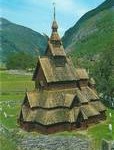
Chris over at Scottish Genealogy News and Events provided an update on the 1875 Norway Census that might be of interest for, “all you Shetland and Orkney folk!” as he puts it. He sites the source of this information as from Family Search (see links below for reference links and the original post):
1875 Norway Census
In the first week of December, we will start indexing the 1875 Norway Census. This will be a large segment of the census for rural areas of Norway, but not the entire census. FamilySearch’s Historical Family Reconstitution unit has joined forces with the University of Tromsø in Norway to complete this project. The university is indexing the census records for the urban areas of Norway.
Pass the word along that anyone interested in Norwegian genealogical research is encouraged to help by volunteering as a FamilySearch indexer.
Completed Projects
The following projects have been completed in the past two weeks. Patrons should be able to search them shortly online at FamilySearch Record Search:
Missouri – 1870 US Census
Tennessee – 1870 US Census
Morelos – 1930 Mexico Census
Alabama – 1920 US Federal Census
Arkansas Marriages II
Alabama – 1850 US Federal Census – General
(This posting is from Scottish Genealogy News and Events.)
…
Where Will You Find Your Ancestors?
Blank Family Tree with Step-by-Step Instructions
…
Family history research in Paisley
October 13, 2008 by Chris
Filed under Articles, Latest News, Public Records
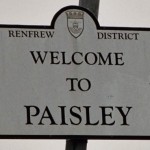
A recent phenomenon that is giving an even greater rise to the popularity of genealogy is the advent of genealogy based TV programming. The success of programs such as “Who Do You Think You Are?” is inspiring many people to take up the hobby and begin the search for their genetic legacy.
Such is the case with Paisley reporter Jeff Holmes who in his article “I never knew about secret Buddie roots “shares with us his personal story of discovery. Along with the tale of his individual journey, Jeff illuminates for us, via his reporting, the unique perspective of genealogy through the eyes of a local studies librarian. Throughout the article Jeff’s message is one of perseverance, surprises and the reward of discoveries made.
This wonderful account was brought to my attention by Chris at Scotland’s Greatest Story , thanks Chris.
For Jeff Holms full article, visit http://www.paisleydailyexpress.co.uk/lifestyle/lifestyle-news/2008/10/13/i-never-knew-about-secret-buddie-roots-87085-22018125/
…
Where to Next?
Blank Family Tree with Step-by-Step Instructions
…
National Archives Announces Death of Legendary Archivist John Taylor
September 24, 2008 by Chris
Filed under Articles, Latest News, Public Records
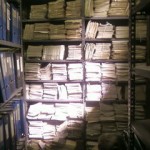 Sad News from the National Archives, A press release September 23, 2008, announces the passing of archivist John E. Taylor. Best known for his “encyclopedic knowledge” on the subject of World War II intelligence records, Mr. Taylor, an employee of the National Archives for 63 years passed away in his home on September 20th, he was 87 years old.
Sad News from the National Archives, A press release September 23, 2008, announces the passing of archivist John E. Taylor. Best known for his “encyclopedic knowledge” on the subject of World War II intelligence records, Mr. Taylor, an employee of the National Archives for 63 years passed away in his home on September 20th, he was 87 years old.
It was in September of 1945, the week that WWII formally ended that John E. Taylor began his career with the National Archives; a career highlighted by many honors and awards including the (OSS) Office of Strategic Services, Society Distinguished Service Award and a lifetime achievement award from the Scone Foundation, established by Stanley Cohen; an award that honors unknown professionals for their important contributions.
In a Washington Times Article from 2003 Mr. Taylor was referred to as a “Wizard of Research” Through his many years at The National Archives he aided thousands of persons with their research from students to best selling authors.
Mr. Taylor was born in Sparkman AR, in 1921. While still a student at the University of Arkansas he wrote the Civil Service exam in 1945 but was precluded from military service due to blindness in one eye.
Mr. Taylor is predeceased by his wife Dolly to whom he was married 44 years and a brother James; he is survived by his niece, Claudia Taylor Walsworth of Ketchum, ID and Nephew James E. Taylor Jr. of San Ramone, CA. Memorial services are planned for mid October.
For the full story visit: The National Archives: Press Release September 23 2008.
…
Where to Next?
Blank Family Tree with Step-by-Step Instructions
…
An Irish Culinary Tradition – Edible Seaweeds
September 14, 2008 by Chris
Filed under Articles, Family History, Preserving Your Family Tree, Public Records
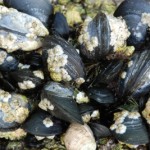 I grabbed this recipe from The Ballycastle Blog: Irish Genealogy and More. Found it so interesting I thought I’d share it with you. The time of the Great Hunger or (The Gotta Mór); Ireland 1845-7, was a bleak time in Irish history. With widespread crop failures and disease that devastated an already weakened people, seaside communities could turn to the sea and thus managed a little better. While men fished, women with their children in-tow hunted the beaches during low tides gathering the numerous varieties of shellfish and seaweeds. A species of seaweed known as Sleabhach which grows from fall to spring on rocks became a staple.
I grabbed this recipe from The Ballycastle Blog: Irish Genealogy and More. Found it so interesting I thought I’d share it with you. The time of the Great Hunger or (The Gotta Mór); Ireland 1845-7, was a bleak time in Irish history. With widespread crop failures and disease that devastated an already weakened people, seaside communities could turn to the sea and thus managed a little better. While men fished, women with their children in-tow hunted the beaches during low tides gathering the numerous varieties of shellfish and seaweeds. A species of seaweed known as Sleabhach which grows from fall to spring on rocks became a staple.
This seaweed is something many of us are familiar with in sushi dishes; you might know it as Nori; today a major Japanese crop worth millions of dollars.
Try out this old Irish recipe’ and impress your Japanese friends.
Sleabhach agus Ruacháin
(Slough-uck a-guss Roo-caw-in)
Nori and Cockles
Ingredients per individual serving
3-4 oz. Nori
15 – 20 Cockles
Butter
Milk.
Cook the Nori in milk for an hour. Cook the cockles in their own juice. If the Nori sheets have not broken up put them in a food-processor for a few moments Serve with a Nori mound in the centre, pour over it a little of the cockle juice and top it with a generous blob of butter. Surround the Nori with the cockles and serve.
I have never seen Nori or the inside of a sushi restaurant, but believe it should work. The original is delicious and cockles go particularly well with “Sleabhach” though other types of shellfish were also used. Perhaps someone who tries the recipe might post his or her culinary review.
See additional Irish family history articles and lessons learned in earlier posts below and in the archives.
This posting is from The Ballycastle Blog: Irish Genealogy and More.
…
Where to Next?
Broaden Your Ancestor’s Name Search
September 11, 2008 by Chris
Filed under Articles, Genealogy and Surnames, Introduction to Genealogy, Lesson 5 Articles, Public Records
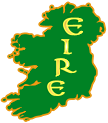 To trace the Irish origins of a client’s Irish grandfather, I recently searched a number of government record databases. The Irish grandfather’s name was Thomas Hogan. Feeling confident in pinpointing the specific person, I entered the first name, Thomas, and the family name (surname), Hogan, in the search fields of the searchable database. My confidence quickly diminished, when, unfortunately, the search results did not produce the one and only Thomas Hogan I was looking for. Being patient and persistent, I took a chance and broadened the search by simply entering the family name (surname), Hogan, in the search field.
To trace the Irish origins of a client’s Irish grandfather, I recently searched a number of government record databases. The Irish grandfather’s name was Thomas Hogan. Feeling confident in pinpointing the specific person, I entered the first name, Thomas, and the family name (surname), Hogan, in the search fields of the searchable database. My confidence quickly diminished, when, unfortunately, the search results did not produce the one and only Thomas Hogan I was looking for. Being patient and persistent, I took a chance and broadened the search by simply entering the family name (surname), Hogan, in the search field.
Although, as you can guess, this wider search produced hundreds of records, I hoped that it might uncover the correct Thomas Hogan.
Eureka! Lo and behold, the “Hogan only” search produced a record for a “Thos. Hogan”, the correct one, the grandfather I was looking for. The lesson learned: before giving up and suspending your search for a specific first name-last name combination, broaden your search to include an abbreviated first name. You may ultimately find the person you are looking for!
Footnote: To quicken the creation of a written form or record, a government official sometimes abbreviated the first name of a person in that form or record. Today, searchable electronic databases contain those same abbreviations.
See more Irish family history articles and lessons learned in earlier posts below and in the archives.
…
Where to Next?
Blank Family Tree with Step-by-Step Instructions
…
London Historical Records To Go Online
September 5, 2008 by Chris
Filed under Articles, Latest News, Public Records
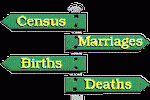 Just received this notice of this from Geneanet. The London Metropolitan Archive and Guildhall Library Manuscripts date from the early 16th Century to 2006. These records, owned by the City of London, include parish records, school records, electoral registers, lists of workhouse laborers and wills. The expected launch date is early 2009 and will comprise the baptismal, marriage and burial records from more that 10,000 parish registers of Greater London. In addition London school admissions from 843 schools, dating from the early Victorian times to 1911, will also be made available.
Just received this notice of this from Geneanet. The London Metropolitan Archive and Guildhall Library Manuscripts date from the early 16th Century to 2006. These records, owned by the City of London, include parish records, school records, electoral registers, lists of workhouse laborers and wills. The expected launch date is early 2009 and will comprise the baptismal, marriage and burial records from more that 10,000 parish registers of Greater London. In addition London school admissions from 843 schools, dating from the early Victorian times to 1911, will also be made available.
This effort is being made on the hope that they will aid individuals in tracing the origins of ancestors who at some point either passed through or lived in London.
…
Where to Next?
…
Medieval England – Soldier Database
June 1, 2008 by Chris
Filed under Genealogy Research Resources, Public Records, Sharing Genealogy Information
 This came through on the Genealogy Blog at GeneaNet today. It appears as if a research grant (from the Arts and Humanities Research Council) for around a half-million pounds was awarded to a couple academics in England. the overall idea is that they’ll use the money to challenge some assumptions about the emergence of professional soldiery in the 14th and 15th century.
This came through on the Genealogy Blog at GeneaNet today. It appears as if a research grant (from the Arts and Humanities Research Council) for around a half-million pounds was awarded to a couple academics in England. the overall idea is that they’ll use the money to challenge some assumptions about the emergence of professional soldiery in the 14th and 15th century.
The genealogy interest…?
“The project has an innovative methodological approach and will be producing an on-line search-able resource for public use of immense value and interest to genealogists as well as social, political and military historians. The project employs two Research Assistants over three years and also includes one Doctoral Research Studentship – all of whom began work on 1st October 2006. The whole team is working on a jointly authored book, conference papers, and articles.”
You can read the full article and get access to the pilot database at GeneaNet’s Blog posting on the matter.
…
…
Where to Next?
Blank Family Tree with Step-by-Step Instructions
…
Controlled Unclassified Information Office
May 26, 2008 by Chris
Filed under Articles, Latest News, Public Records
 In a press release from the National Archives Allen Weinstein, Archivist of the United States announces the formation of the (CUIO) or “Controlled Unclassified Information Office”. Mr. Weinstein also announced that the recently created office will be headed by director of the Information Security Oversight Office, William J. Bosanko. The creation of this office is in response to a memorandum issued by President Bush on May 9, 2008 to the Heads of Departments and Agencies on the Designation and Sharing of Controlled Unclassified Information; designating the National Archives as the responsible group for managing, administrating and implementing the CIU framework.
In a press release from the National Archives Allen Weinstein, Archivist of the United States announces the formation of the (CUIO) or “Controlled Unclassified Information Office”. Mr. Weinstein also announced that the recently created office will be headed by director of the Information Security Oversight Office, William J. Bosanko. The creation of this office is in response to a memorandum issued by President Bush on May 9, 2008 to the Heads of Departments and Agencies on the Designation and Sharing of Controlled Unclassified Information; designating the National Archives as the responsible group for managing, administrating and implementing the CIU framework.
Mr. Weinstein states, that in initiating the office, “I have provided Mr. Bosanko with a clear roadmap for the National Archives, as the executive agent and consistent with the President’s direction, to ensure that only information which genuinely requires the protections afforded by the President’s memorandum will be introduced into the CUI Framework.”
For the full story visit: http://www.archives.gov/press/press-releases/2008/nr08-107.html
…
Where to Next?
Blank Family Tree with Step-by-Step Instructions
…
National Archives Hosts Free Genealogy Fair April 23, 2008
April 6, 2008 by Chris
Filed under Articles, Latest News, Public Records
 Write down this date and clear a space on your calendar! Wednesday, April 23, 2008. This is the date for the National Archives fourth annual Genealogy Fair. The highlights of this year’s program are the National Archives Federal records relating to the subject of general genealogy.
Write down this date and clear a space on your calendar! Wednesday, April 23, 2008. This is the date for the National Archives fourth annual Genealogy Fair. The highlights of this year’s program are the National Archives Federal records relating to the subject of general genealogy.
From the WWI and the Works Progress Administration there will be sessions offered in:
• Civil War pension files
• Freedmen’s Bureau marriage records
• World War I draft registration records
• New Deal publications
You will be in for a treat as the National Archives staff give demonstrations on the use of databases such as, Access to Archival Databases (ADD) and Archival Research Catalog (ARC). No matter if you are an experienced genealogist or a genealogy beginner the fair – which is free and open to the public – will provide guidance and information that you are bound to find of benefit to your future research efforts.
…
Where to Next?
Blank Family Tree with Step-by-Step Instructions
…
Maps of Historic London
March 8, 2008 by Chris
Filed under Genealogy Searches by Place, Introduction to Genealogy, Public Records
 The folks over at Genealogy Insider have brought us a great post on London Maps. In an article by Grace we learn about the virtual exhibition of historical maps of the city from the British Library. This is a must visit, titles like this one from a map dating from 1653 should spark your interest for more.
The folks over at Genealogy Insider have brought us a great post on London Maps. In an article by Grace we learn about the virtual exhibition of historical maps of the city from the British Library. This is a must visit, titles like this one from a map dating from 1653 should spark your interest for more.
‘A guide for Cuntrey men In the famous Cittey of LONDON by the helpe of wich plot they shall be able to know how farr it is to any Street.’
In this exhibit you will find 40 historic plats organized via Google maps that can easily help you clarify the areas they correspond to. If you prefer, you also have the option of looking at maps by time period.
You can access the full post by clicking here. It is really amazing how things are changing with the internet. There is no end to the resources available to us all in our search for our ancestors.
…
Not interested in the map?
Blank Family Tree with Step-by-Step Instructions
…
